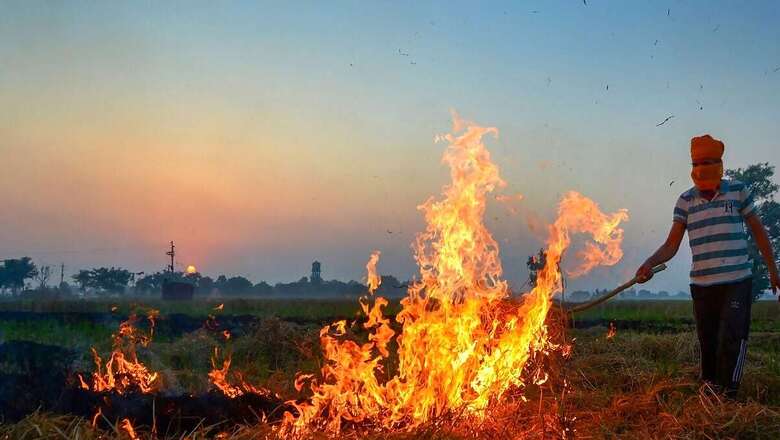
views
There is no respite for Delhi residents as toxic smog continues to take hold of the city. After a glimpse of clear skies, the air pollution has surged again since Diwali night with continuous bursting of firecrackers. To make matters worse, the stubble burning has picked up again in the neighbouring states.
The Supreme Court ban on firecrackers and stubble burning has now gone up in smoke as both practices continued unabated across the region after Diwali. The AQI rose sharply over the last few days, hovering between ‘very poor’ to ‘severe’ levels. The brief spell of rains on Friday had brought down the contribution of smoke intrusion from neighbouring states to Delhi’s air pollution from 40% during the first of November to just 5%.
However, the satellites have now detected a spike in fire counts over the last three days. As many as 3,065 fire counts have been recorded across the neighbouring states on Wednesday, up from 2,040 the day before. Punjab continues to lead with 2,544 fire counts due to the largest area under paddy cover, followed by Madhya Pradesh (326), Haryana (62), Uttar Pradesh (49) and Rajasthan (84).
With winter ready to set in, there is little time left for farmers to sow the Rabi crops who are now setting fire to their harvested fields. Despite the Punjab government’s promise of delivering over 1 lakh Crop Residue Machines in the state, nearly 30,000 stubble burning incidents have been reported in Punjab, with Sangrur as the biggest contributor. The state had committed to bringing down the crop fires by 50% from the last season.
Overall, as many as 45,425 fire counts have been detected this season from all the neighbouring NCR states from September 15 to November 15, down from 58,551 during the corresponding period last year.
Last week, the Supreme Court had directed the state governments of the NCR states to ensure that stubble burning is stopped immediately, after Delhi’s AQI remained ‘severe’ consecutively for a week. The levels of PM2.5 (particulate matter with diameter of less than 2.5 microns) which tend to be easily inhaled into the lungs had surged way past the safe limits prescribed by the World Health Organization (PM2.5).
According to the Central Pollution Control Board (CPCB), that monitors the air quality in 35 operating stations, Delhi’s AQI was on the brink of ‘severe’ levels on Wednesday with a value of 398. The air quality is expected to remain very poor over the next few days as well.


















Comments
0 comment